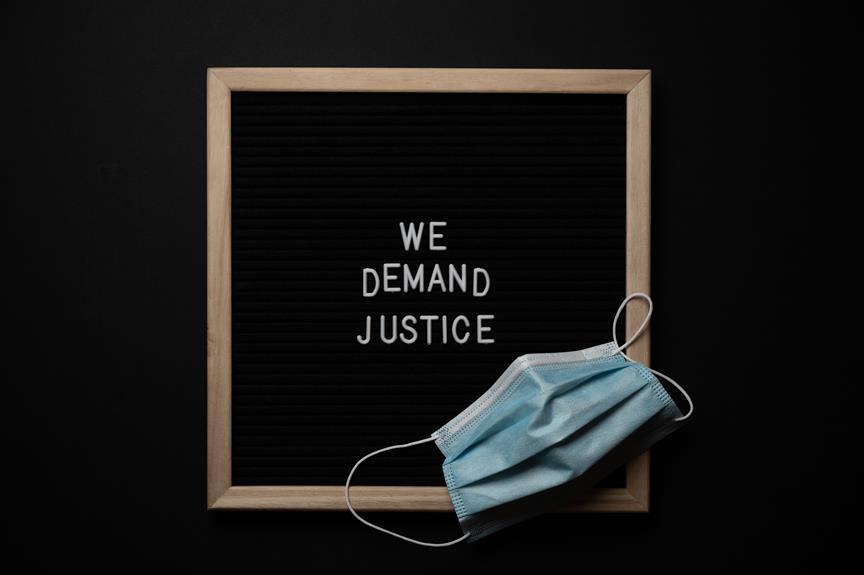COVID-19 Exposes New Health Risks: Frontline Workers Demand Hazard Pay
The COVID-19 pandemic has redefined occupational health risks, prompting frontline workers to demand hazard pay. Traditionally reserved for inherently dangerous roles, hazard pay is now sought by those facing pandemic-induced risks. With no standard guidelines, the situation reveals the inadequacy of workers' compensation. This article explores the transformation of hazard pay amidst COVID-19, governmental responses, and the future implications of this evolving narrative.

Key Takeaways
- Hazard pay traditionally applied to workers in dangerous occupations like mining, construction, and the military, but COVID-19 expanded the definition of frontline workers and the need for hazard pay.
- The U.S. Department of Labor defines physical hardship as extreme physical discomfort or distress, and the pandemic exposed previously non-dangerous jobs to new health risks.
- The 10 largest categories of frontline occupations in 2018 included registered nurses, personal care aides, cashiers, janitors and cleaners, laborers and freight, stock, and material movers, among others.
- Hazard pay has evolved and broadened since the pandemic, with over 75% of the American workforce supporting hazard pay for essential workers. Suggestions for compensating frontline workers include raising wages or providing additional bonus money as hazard pay.
Understanding the Concept of Hazard Pay
The concept of hazard pay, a topic of substantial discourse, fundamentally pertains to the additional compensation provided to employees who perform work involving physical hardship or risk, a circumstance that has grown more prevalent and significant in the context of the COVID-19 pandemic. The importance of hazard pay in ensuring worker safety cannot be understated. It not only provides financial incentive to those undertaking risky tasks but also acknowledges their bravery and dedication. However, implementing hazard pay policies during the pandemic has not been without challenges. Policymakers and employers grapple with defining who qualifies and determining appropriate compensation amounts. The lack of a uniform policy also poses difficulties. Despite these challenges, the necessity of hazard pay in the current crisis is unequivocal.
Identifying the Frontline Workers in the Pandemic
In the face of COVID-19, an estimated 50 million frontline workers have emerged, spanning various occupations such as healthcare, retail, and delivery services, all of whom face increased health risks due to their essential roles. The frontline worker demographics are diverse, including registered nurses, cashiers, janitors, and truck drivers, among others. These workers, despite their essential contribution, often face significant financial burdens. Many have to forego necessities such as medication and healthy food to meet their financial obligations. In addition, proving workplace exposure to COVID-19 is challenging, making it difficult to benefit from workers compensation. As the pandemic continues to evolve, the financial and health risks these frontline workers face underscore the urgent need for comprehensive measures, such as hazard pay, to address these challenges.
The Transformation of Hazard Pay Amidst COVID-19
Amidst the COVID-19 pandemic, hazard pay has transformed significantly, with over 75% of the American workforce now advocating for this compensation for frontline workers, and yet, no federal hazard pay package has been passed by Congress. The economic impact of hazard pay policies extends beyond individual financial relief. It's about validating the increased risk and hardship these workers face daily. Case studies of frontline workers, from nurses to grocery store employees, underscore the human impact. They reveal the physical and emotional toll of their roles, exacerbated by financial stress. Many are forced to make difficult choices, such as skipping medications or healthy food to support their families. Without hazard pay, the struggle for many of these heroes continues.
The Inadequacy of Workers Compensation During the Pandemic
During the pandemic, many frontline workers faced financial burdens as the existing workers compensation failed to adequately address their needs and risks. Their unprecedented exposure to health risks underscored the inadequacy of traditional compensation systems in catering to sudden, pandemic-induced hazards. While workers' rights were upheld in theory, the financial burden borne by these essential workers revealed a gap in their practical protection. Proving COVID-19 exposure in the workplace became a herculean task, often leading to a denial of rightful compensation. Many had to take unpaid leave or cover medical expenses out of pocket, further straining their finances. This situation underscores the urgent need for reevaluating and reinforcing workers' compensation mechanisms to ensure fair and adequate protection for those bravely serving on the frontlines.
Governmental Response to Hazard Pay Demands
The governmental response to hazard pay demands has been varied, with some local and state governments implementing programs, but a federal package has yet to be passed. By offering financial incentives under the American Rescue Plan Act, the government supports companies willing to provide hazard pay. Yet, the discretionary nature of these measures means that the burden often falls on the employer's responsibility to decide whether to compensate their employees for increased risk. This leaves many frontline workers without additional compensation despite their increased exposure to health risks. An empathetic perspective recognizes the financial strain these workers face amidst a pandemic. A comprehensive federal approach, encompassing both government support and employer responsibility, is vital to ensure fair hazard pay for all frontline workers.
Case Studies of Frontline Workers Facing New Health Risks
In our exploration of frontline workers' experiences, the case studies reveal both the unexpected health risks they now face due to the pandemic and the essential role they play in society. Case studies highlight the amplified vulnerability of these workers, particularly those in low-wage jobs, such as grocery store cashiers and nursing assistants, who have had to bear the brunt of the crisis.
These frontline workers, often exposed to high-risk environments without adequate protection, have emerged as unsung heroes. However, their work comes at a cost. Many have reported physical and mental health issues, indicating a need for better institutional support. Our society, now more than ever, must recognize their sacrifices and ensure fair compensation and improved workplace safety measures for these invaluable individuals.
The Economic Impact of Hazard Pay on Businesses
Weighing up the costs, businesses must grapple with the economic impact of implementing hazard pay, a factor that has gained significant relevance in the wake of the COVID-19 pandemic. The impact on small businesses, often operating on slim margins, is particularly profound. Yet, hazard pay could be instrumental in employee retention and motivation, fostering an environment of gratitude and respect towards those braving health risks. Most importantly, it acknowledges the extraordinary service frontline workers provide. However, the financial burden of providing hazard pay can be daunting for many businesses. Therefore, a balance must be struck, one that considers the financial viability of businesses, particularly small ones, while also recognizing the imperative to fairly compensate employees for their increased risk.
Future Implications: The Long-Term Effects of Hazard Pay Policies
Evaluating the long-term effects of hazard pay policies, it becomes clear that these measures could cause a significant shift in labor market dynamics, potentially raising wages for millions of workers, yet they could also put financial strain on businesses that are already struggling. The economic implications of hazard pay policies are complex; they offer a potential solution for income inequality, yet could exacerbate the financial difficulties of struggling industries. Furthermore, the potential for hazard pay to attract and retain frontline workers is significant. Individuals may be drawn to occupations that offer hazard pay, providing a stable workforce during times of crisis. Yet, this increased cost could further stress businesses, requiring careful policy crafting to balance worker protection and business viability.
Frequently Asked Questions
How Has Hazard Pay Been Implemented in Other Countries During the COVID-19 Pandemic?
In evaluating the efficacy of hazard pay, international comparisons provide insightful perspectives. During the COVID-19 pandemic, countries like Canada implemented temporary wage top-ups for essential workers. Meanwhile, France offered bonuses to health workers, and the UK doubled pay for overtime hours. These measures vary in their approach and magnitude, indicating the need for a nuanced understanding of hazard pay implementation in response to pandemic-related risks.
What Are the Psychological Implications for Frontline Workers Who Do Not Receive Hazard Pay?
Frontline workers not receiving hazard pay may experience emotional burnout and adverse mental health effects. These individuals risk their lives daily, yet the lack of financial recognition can lead to feelings of neglect and devaluation. This can trigger stress, anxiety, and depression. Prolonged exposure to such environments can lead to chronic psychological conditions. Therefore, it is essential to address this issue for the wellbeing of frontline workers.
Are There Any Laws in Place to Protect Workers Who Refuse to Work Under Hazardous Conditions Without Adequate Pay?
Legal loopholes currently allow employers to avoid providing hazard pay, even under risky conditions. Nonetheless, there are laws protecting workers who refuse unsafe work, such as the Occupational Safety and Health Act. Union advocacy plays an essential role in pushing for better worker protections and hazard pay. However, the effectiveness of these laws and efforts can vary, highlighting the need for comprehensive legislation to adequately safeguard frontline workers.
How Has the COVID-19 Pandemic Changed the Public’s Perception of What Constitutes a Hazardous Job?
The COVID-19 pandemic has significantly redefined the perception of hazardous jobs. Previously, such jobs were predominantly in sectors like mining and construction. However, the pandemic introduced new risks in traditionally non-hazardous roles, such as healthcare, grocery, and delivery services. This shift in hazard perception underscores the pressing need for reconsidering compensation structures, including the provision of hazard pay, to adequately reflect the realities of these frontline roles in a pandemic-stricken world.
What Are the Potential Societal Impacts if Hazard Pay for Frontline Workers Is Not Broadly Implemented?
If hazard pay is not broadly implemented for frontline workers, it could exacerbate economic inequality, as these individuals often earn lower wages despite facing higher risks. This lack of recognition and compensation may also lead to a significant morale decline among these workers, potentially impacting their work performance or leading to increased turnover rates. This, in turn, could negatively affect public services and overall societal wellbeing.
Conclusion
The COVID-19 pandemic has unearthed the fragility of occupational health safety, necessitating a reconsideration of hazard pay policies. As frontline workers face unprecedented health risks, the inadequacy of workers' compensation becomes evident. While government responses have varied, the demand for hazard pay is growing, and its economic impact on businesses cannot be ignored. The long-term effects of these policies will undoubtedly reshape the future of labor rights, underscoring the need for more comprehensive protection for all workers.

This post has been generated by AI and was not reviewed by editors. This is Not legal advice. Please consult with an attorney.




